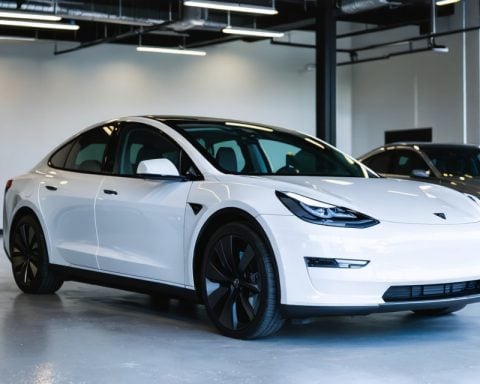- Ohio’s installation of electric vehicle (EV) charging stations has halted due to a freeze on funds from the 2021 Bipartisan Infrastructure Law.
- This pause in funding impacts Ohio’s clean energy goals, delaying construction and putting jobs and community benefits on hold.
- The delay raises concerns about environmental and economic consequences, emphasizing the necessity for cleaner transportation and infrastructure.
- Current pollution from fossil fuels increases health risks and contributes to extreme weather patterns, underlining the urgent need for change.
- Ohioans are encouraged to voice their support for funding releases by contacting congressional representatives to advocate for the state’s green initiatives.
- The push for a green economy presents opportunities for healthier communities and sustainable jobs, drawing on Ohio’s manufacturing heritage.
- There’s an urgent call to action for Ohio to advance its clean energy transformation.
Ohio’s path to a greener future faces an unexpected roadblock. As electric vehicles gain traction across the country, the momentum to install crucial charging stations has come to a standstill. The recent freeze on spending, part of a wider pause in funding authorized by the 2021 Bipartisan Infrastructure Law, has left Ohio’s clean energy ambitions hanging in the balance and temporarily halted the construction of electric vehicle (EV) chargers.
The implications ripple far beyond the pause itself. Blueprints for a cleaner state are sidelined, jobs are put on hold, and communities that rely on the promise of green infrastructure face uncertainty. The chill in progress stirs concerns about the broader environmental and economic impact. Clean transportation isn’t just about EVs; it’s about health, climate resilience, and creating opportunities in a state where manufacturing once thrived.
The stakes are high. Pollution from fossil fuels continues to fuel respiratory diseases while setting our planet on a dangerous path toward more extreme weather. From the wildfires in Los Angeles to the tornadoes wreaking havoc in Ohio, the signs are clear: our current trajectory demands change.
But there’s hope—a chance to influence this narrative. Ohioans can take the wheel, urging congressional representatives to release the funds and revitalize the state’s green economy. It’s a call for citizens to rally, to phone and email Sens. Bernie Moreno, Jon Husted, and their U.S. House representatives. We hold the power to propel forward the transition toward cleaner energy, healthier communities, and sustainable jobs in Ohio.
Now is the moment to press on the accelerator for Ohio’s clean energy transformation.
The Hidden Roadblocks in Ohio’s Green Energy Transition: What You Need to Know
How to Navigate the Stalemate in Ohio’s EV Charging Expansion
As Ohio’s green energy plans face unexpected challenges, the suspension of funding for electric vehicle (EV) charging stations emerges as a significant roadblock. However, understanding the complexities and addressing them with actionable steps will empower residents and stakeholders to overcome these hurdles effectively.
1. Engage with Policymakers:
– Ohioans should actively communicate with their congressional representatives. Phone calls and emails can push politicians to act, emphasizing the importance of releasing the funds earmarked for green infrastructure. For constituents unsure of their representatives, tools like House.gov and Senate.gov provide resources to identify and contact them.
2. Build Local Initiatives:
– Communities can create local initiatives to encourage EV adoption, such as establishing grassroots programs that advocate for and demonstrate the benefits of electric vehicles.
Real-World Use Cases of EV Charging Infrastructure
Other regions’ success stories with EV charging infrastructure can serve as a model for Ohio:
California:
– California leads in EV infrastructure, with over 35,000 installed charging stations. This network not only supports the state’s large population of electric vehicles but also stimulates job creation in related sectors.
Norway:
– Norway’s comprehensive network of EV chargers, supported by government subsidies, has passed 20,000 installations. This has significantly reduced air pollution and spurred economic growth in manufacturing and technology.
Market Forecasts and Industry Trends
The global EV charging infrastructure market is predicted to grow at a CAGR of over 20% from 2021 to 2028 (Grand View Research). In Ohio, continued growth in the EV sector is expected to create opportunities for investment in charging technologies and green jobs.
Reviews & Comparisons
Charging Networks:
– Tesla Superchargers: Known for their rapid charging speeds, they offer convenience but are primarily accessible to Tesla users.
– ChargePoint: Offers flexibility with a wide range of charging stations compatible with various EV models.
Comparison: ChargePoint network provides more universal access, whereas Tesla offers superior speed but limited vehicle compatibility.
Controversies & Limitations
While expanding EV infrastructure is crucial, challenges include:
– Funding Allocation Transparency: There is often debate about how funds are distributed and their effective use.
– Infrastructure Challenges: Rural areas may find deployment more difficult due to lower population densities, impacting profitability and access.
Features, Specs & Pricing
– Level 2 Chargers: Typically range from $500 to $2,000 in installation costs, providing moderate charging speeds conducive to residential and commercial use.
– DC Fast Chargers: Cost $10,000 to $40,000, catering to high-demand public locations, offering significantly faster charge times.
Security & Sustainability
Security in the context of EV charging involves the implementation of secure payment options and user data protection. Sustainability can be enhanced by sourcing energy for EV chargers from renewable sources.
Pros & Cons Overview
Pros:
– Environmental Benefits: Reduced emissions and decreased dependence on fossil fuels.
– Economic Opportunities: Creation of new jobs in green technology sectors.
Cons:
– High Initial Costs: Installation and establishment of network giants may deter potential investors.
– Infrastructural Gaps: Uneven distribution between urban and rural areas can widen accessibility gaps.
Actionable Recommendations
– Advocate for Renewable Energy: Encourage local governments and utilities to prioritize renewable sources for powering EV chargers.
– Explore Incentives: Utilize federal and state incentives for installing home EV chargers to offset costs.
– Educate and Engage: Host community workshops to educate the public on the benefits of EV adoption and infrastructure support.
By adopting a proactive approach and leveraging policy knowledge, Ohio can overcome current obstacles to its green future. For those interested in more about EVs and infrastructure, visit the official pages of U.S. Department of Energy and Environmental Protection Agency.













